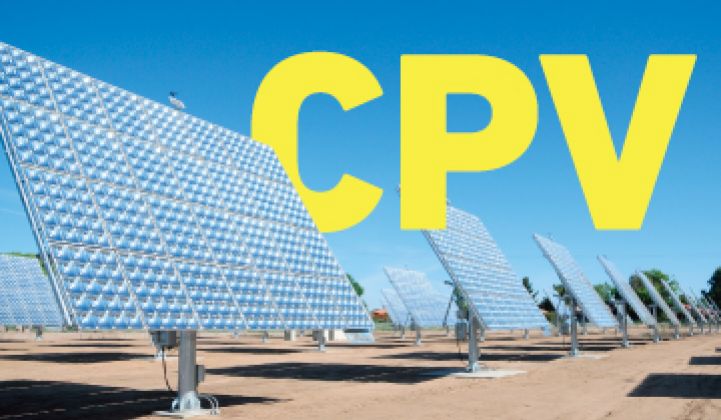SolFocus, a concentrated photovoltaics (CPV) vendor, just announced a large CPV project being developed in Baja California near Tecate, Mexico, right on the U.S.-Mexico border.
At 50 megawatts with the potential to expand to 450 megawatts, it could easily be one of the largest CPV developments on earth. The leaders in the CPV systems markets are Amonix, Soitec, and SolFocus, but things have been relatively quiet in CPV of late. The largest operating CPV power plant in the U.S. is the Hatch site in New Mexico, at least until the 30-megawatt Alamosa project comes online.
Concentrated photovoltaics (CPV) work well in high-heat regions. We've seen some examples where high-heat regions can be less than kind to flat plate photovoltaic panels.
SolFocus is partnering with Grupo Musa, a Mexican land and real estate developer, and Synergy Technologies, a U.S. energy project developer. According to press releases, the project is planned for an eventual 450 megawatts to be built in 50 megawatt blocks, with construction for the first block starting late this year. The power plant will be owned and operated by SolMex Energy. Asian Pacific Development Corporation is helping coordinate the project as well as the debt financing from international financing corporation FINEXIM.
FINEXIM has allocated $720 million to the first four of nine 50-megawatt tranches of the solar project, according to William Beilman, Managing Director of FINEXIM, who was quoted in a press release.
The power plant could deploy 3,850 SolFocus systems on the 300-acre site.
I communicated with Nancy Hartsoch, VP at SolFocus, who added, "The property for this plant is literally on the California/Mexico border. […T] he U.S. border is immediately on the other side of the property. An additional note is that part of the project plans includes the establishment of a panel manufacturing facility 'in region.' That location should be determined by around July, and will be based on the SolFocus outsourced manufacturing model."
According to Hartsoch, "There is no subsidy regime in Mexico. They do have accelerated depreciation for renewable projects, but that is about it, so solar projects have to stand on their own. Energy prices in Mexico are complex, and go from very low for some segments (industrial, agriculture, etc. are highly subsidized) to extremely high for others. Baja California has some of the higher energy costs. Also, energy prices fluctuate month to month, so that is also a challenge for the region."
She added, "For the first 50 megawatts, the off-take will be Grupo Musa and its affiliated businesses, which includes a lot of water pumping applications. The project company -- SolMex Energy -- has PPAs with Grupo Musa. In Mexico, this is done in a way that is something like our net metering; However, the power can be produced in a central field like this, and then routed to the businesses versus generated on-site, as long as the offtaker has an ownership interest in the power plant. Power with be transmitted through the CFE grid (central utility for all of Mexico). The additional eight 50-megawatt tranches of offtake are still being finalized, but will likely be more of a IPP approach, and the PPAs are yet to be put in place. Once the construction starts on this site (targeted for mid-summer and dependent on the government-supported permitting schedule), the focus will shift to the additional PPAs."
This is brilliant news for the CPV sub-sector, providing the project can be brought across the finish line. And there's plenty of work to be done until that happens.
Central America and South America are seeing increased interest from both solar and wind developers, due to generous resources and improving regulatory regimes. GTM's upcoming Solar Summit will have a session delving into the details of this emerging region.
_603_237_80.jpg)



